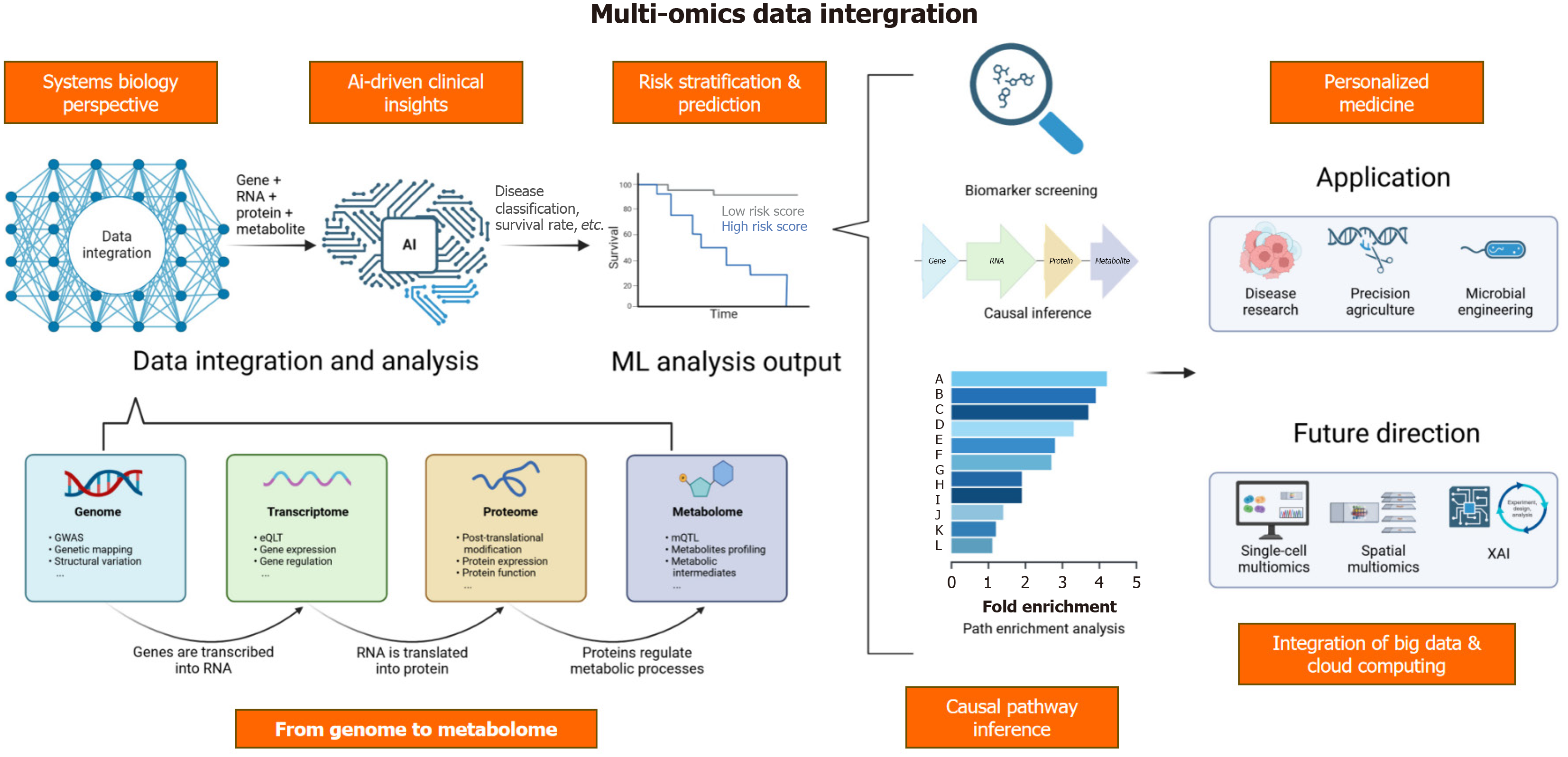Copyright
©The Author(s) 2025.
World J Diabetes. Jul 15, 2025; 16(7): 106218
Published online Jul 15, 2025. doi: 10.4239/wjd.v16.i7.106218
Published online Jul 15, 2025. doi: 10.4239/wjd.v16.i7.106218
Figure 2 Multi-omics data integration and machine learning in disease research.
This schematic illustrates how multi-layered omics data-genomic (e.g., genome-wide association study), transcriptomic (gene expression), proteomic (protein abundance/modifications), metabolomic (small-molecule metabolites), and microbiomic-are consolidated into a unified analysis pipeline. Machine learning models (e.g., neural networks, random forests, or autoencoders) can uncover hidden patterns, classify diabetes subtypes, and predict disease progression or therapy response. The figure underscores how single-cell/spatial omics approaches enhance resolution by identifying rare cell populations, while explainable artificial intelligence techniques clarify the basis of predictive models, ultimately guiding personalized interventions. AI: Artificial intelligence; XAI: Explainable artificial intelligence; ML: Machine learning.
- Citation: Song CM, Lin TH, Huang HT, Yao JY. Illuminating diabetes via multi-omics: Unraveling disease mechanisms and advancing personalized therapy. World J Diabetes 2025; 16(7): 106218
- URL: https://www.wjgnet.com/1948-9358/full/v16/i7/106218.htm
- DOI: https://dx.doi.org/10.4239/wjd.v16.i7.106218









